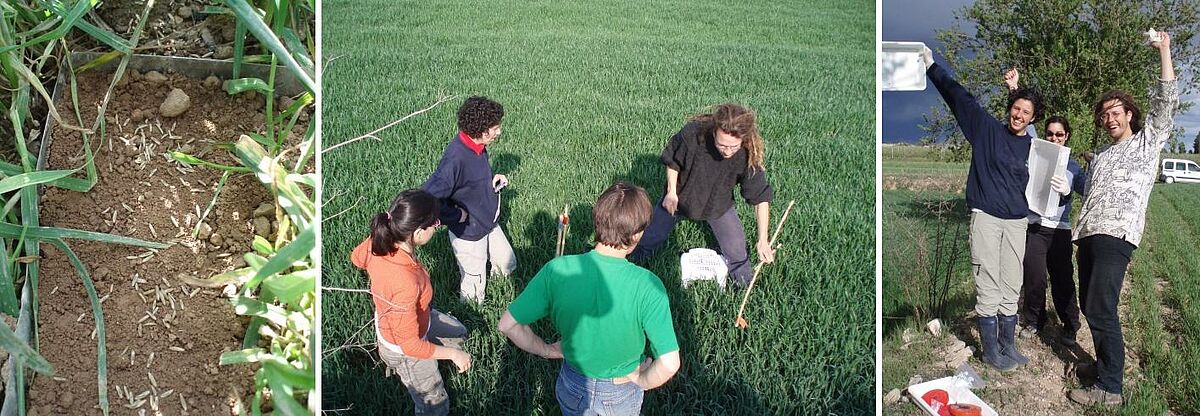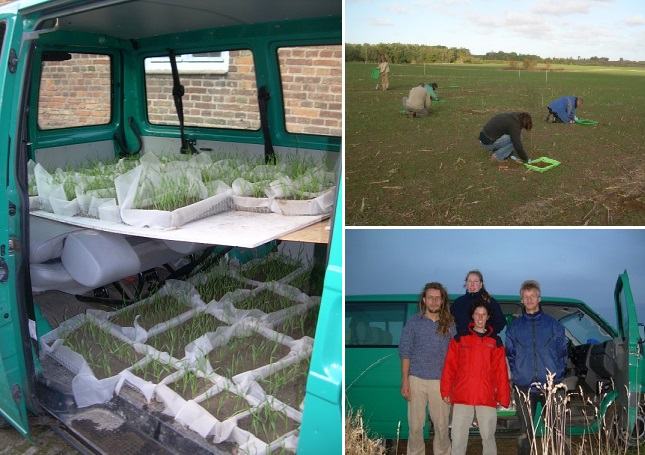About the contribution of seed predation on weed demography
Weed seed predation has the potential to limit weed population growth within agricultural fields. Its success depends in part on the ability of predators to detect weed patches at the field scale. Seed predation will be most effective if the proportion of seeds predated increases with increasing size and seed density of patches.The response of seed predators to varying seed densities and patch sizes was measured in experiments conducted in N-Germany and NE-Spain.
A) Experiment in NE-Spain.
Density-dependent seed predation was measured by varying seed density and patch size in four irrigated conventionally managed cereal fields. Artificial weed seed patches were created by applying a range of Lolium multiflorum seed densities from 0 to 7500 seeds m-2 in 225 m² patches (2008) or in patches that varied in size from 1 to 9 m² (2009). Seed predation was estimated using seed cards and seed frames. The granivorous rodents Mus spretus and Apodemus sylvaticus caused high seed predation (92%) in three fields, whereas in a fourth field, seed predation rate was lower (47%). Rodents responded to seed density in an inversely density-dependent manner, but this had little biological meaning as even in patches seeded with the highest seed density the input to the soil seed bank was reduced by 88%. For the period of time this experiment lasted, hardly any seeds would have entered the seedbank.
B) Experiment in N-Germany.
An experiment was conducted in four winter wheat fields during October 2008 and 2009. Zero, 1000, 2500 and 5000 seeds m-2 of Lolium multiflorum were applied to four adjacent 15 m x 15 m plots in each field. Seed predation was measured in 20 randomly located trays per plot that were accessible to all predators (eight per plot) or excluded vertebrates (12 per plot). Seeds were left exposed in the field for 18 days. Remaining seeds were recovered from the soil and counted. In addition, 20 seed cards were randomly placed in each plot, half of them with vertebrate exclosure cages. Seeds on cards were counted every other day. Seed predators were identified. Predation rates measured by trays were low (32.7 % per 18 days) and may have been caused by low densities of predators. Vertebrates responded in a direct density-dependent way to increasing seed densities, whereas the response of invertebrates was density independent. Seed predation from seed cards confirmed the density-dependent responses obtained using trays. Seed predators only needed a few days to detect and exploit the high density plots. Weed seed patches are likely to persist in fields where invertebrates are the main predators, while they could be better controlled where granivorous rodents predominate.


